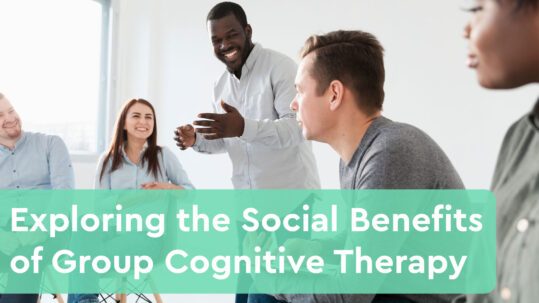2 Kinds of Bridging Groups and Why You Should Provide Them
Bridging groups offer an opportunity for therapists and clients to discuss and apply practiced cognitive skills. Bridging groups may focus on metacognition or on skill-building. In this blog post, we discuss the two different types of bridging groups and why you should provide both kinds for your clients.
What is a metacognitive bridging group?
Metacognitive bridging groups focus on “thinking about thinking”. In these groups, the therapist leads the group in thinking about the thought processes involved in building and utilizing a cognitive skill. A therapist may ask the group to think about and share their process on how they would approach a particular problem before versus how they would do so now. Having the group then reflect on the changes they have made as a result of therapy. Thought processes are the focus of these groups, with emphasis on the reflection of what thought processes are successful or harmful, and how they may have to adapt a new skill as a result of receiving cognitive rehabilitation therapy.
Why should you provide a metacognitive bridging group?
Understanding thought processes may help clients understand how they arrive at the solutions that they do. It also may help clients identify what difficulties they have with the conceptualization of specific cognitive skills. Clients may not be able to recognize why they are struggling to follow a thought process. Metacognitive bridging groups would allow them to see how they apply certain thought processes to solve real-world problems. From a therapist view point, adding metacognitive groups will allow them to see the presence or lack of cognitive skill building blocks a client may have. Without doing this, a therapist may think a client is struggling with applying a concept to the real world but in reality they may not have the building blocks of a cognitive skill mastered or properly conceptualized yet. Having clients reflect upon their thought processes can help both clients and therapists become more aware of the work that needs to be done to help reach cognitive goals.
What is a skill building bridging group?
Practice makes perfect, and there is no better practice of a cognitive skill than being challenged to apply it to an everyday situation. Digital cognitive therapy tools and worksheets offer an opportunity to practice and build cognitive skills, but the real indicator and facilitator of learning is real-world application. Using skill building bridging groups, a therapist can determine whether a client has successfully built the building blocks of a cognitive skill or if the client is struggling with generalization and application. The therapist can then tailor therapy to focus on where the client is struggling so that the client can benefit from targeted therapy.
Why should you provide a skill building bridging group?
Understanding thought processes may help clients understand how they arrive at the solutions that they do. It also may help clients identify what difficulties they have with the conceptualization of specific cognitive skills. Clients may not be able to recognize why they are struggling to follow a thought process. Metacognitive bridging groups would allow them to see how they apply certain thought processes to solve real-world problems. From a therapist view point, adding metacognitive groups will allow them to see the presence or lack of cognitive skill building blocks a client may have. Without doing this, a therapist may think a client is struggling with applying a concept to the real world but in reality they may not have the building blocks of a cognitive skill mastered or properly conceptualized yet. Having clients reflect upon their thought processes can help both clients and therapists become more aware of the work that needs to be done to help reach cognitive goals.
Conclusion
Bridging groups allow for the exchange of ideas among group members. Metacognitive and skill building bridging groups are needed to help clients think about their own thought processes and learn how to apply the learned cognitive skills. These groups are also a source of information for the therapist. They allow the therapist to identify where their client is having difficulties and how to target them as well as how well the treatment plan is working and where improvements need to be made. Providing both of these kinds of bridging groups is not completely necessary for the therapeutic process, but are needed to be done either in a group or individually to help both the client and therapist improve awareness of how the therapeutic process is working.









